MARCH 15-16, 2025: Over the next two days, we wandered the streets of Palermo, following a long list of Jewish sites we wanted to visit. In between, we explored some of the city’s major tourist attractions. This blog will cover the general sights we visited, while the next post will be a detailed dive into Jewish Palermo.
Our apartment, located in the heart of the historic district, sits in a small alleyway off Via Maqueda – one of the city’s main pedestrian streets, lined with tourist shops and restaurants. One unexpected feature that immediately caught my eye, was that many restaurants here display sample dishes outside to entice passersby to come in.
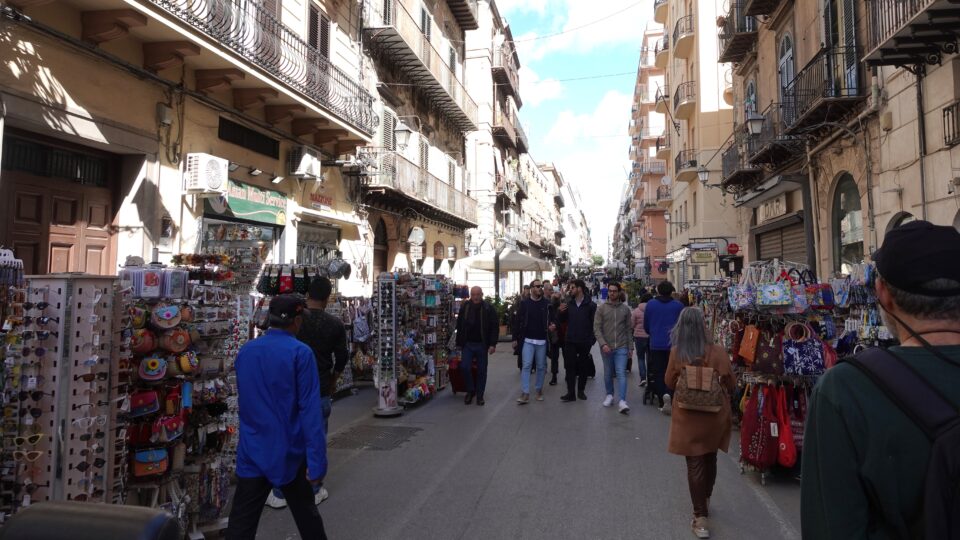
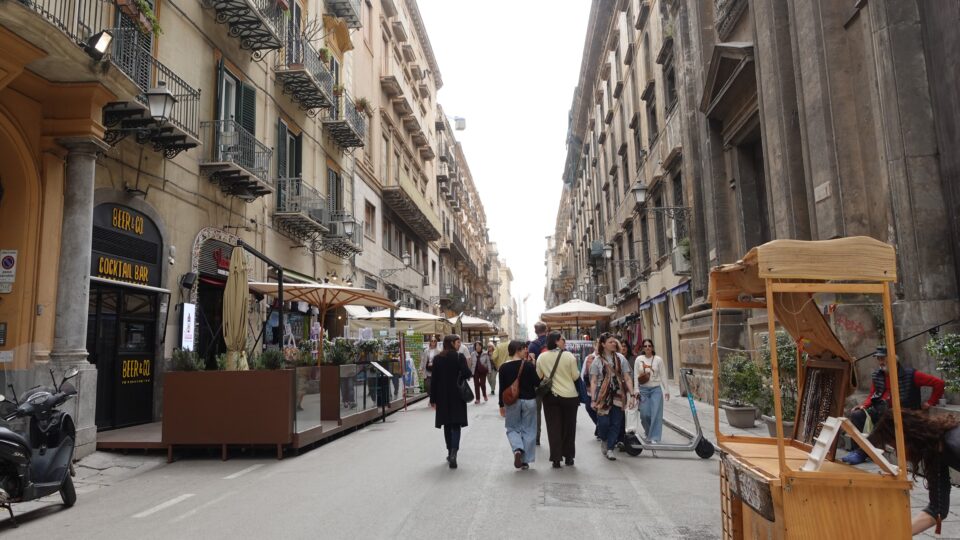
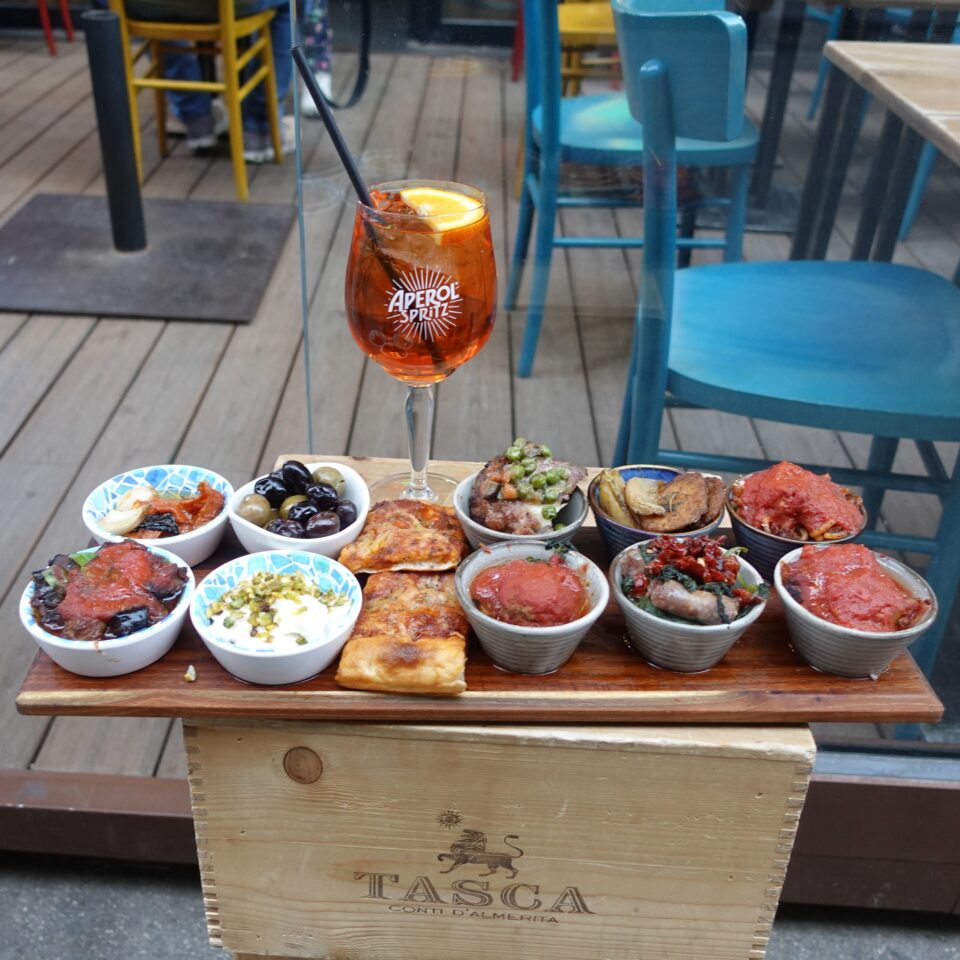
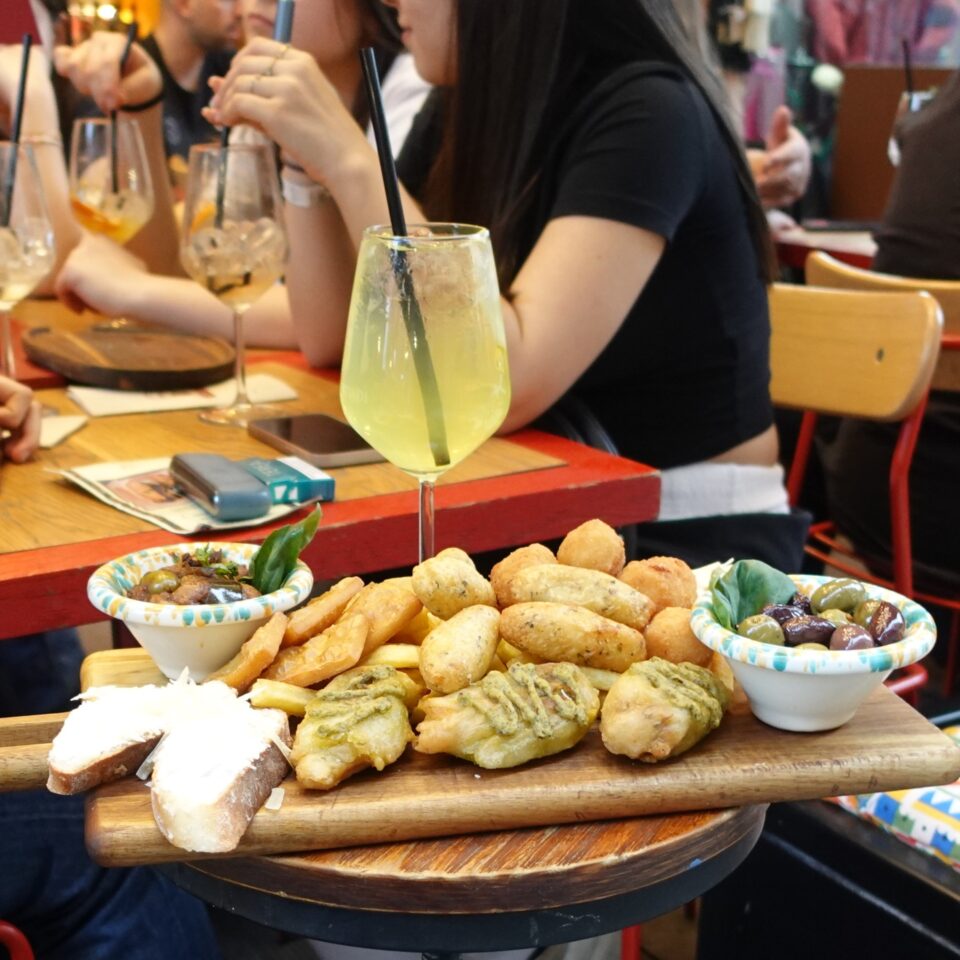
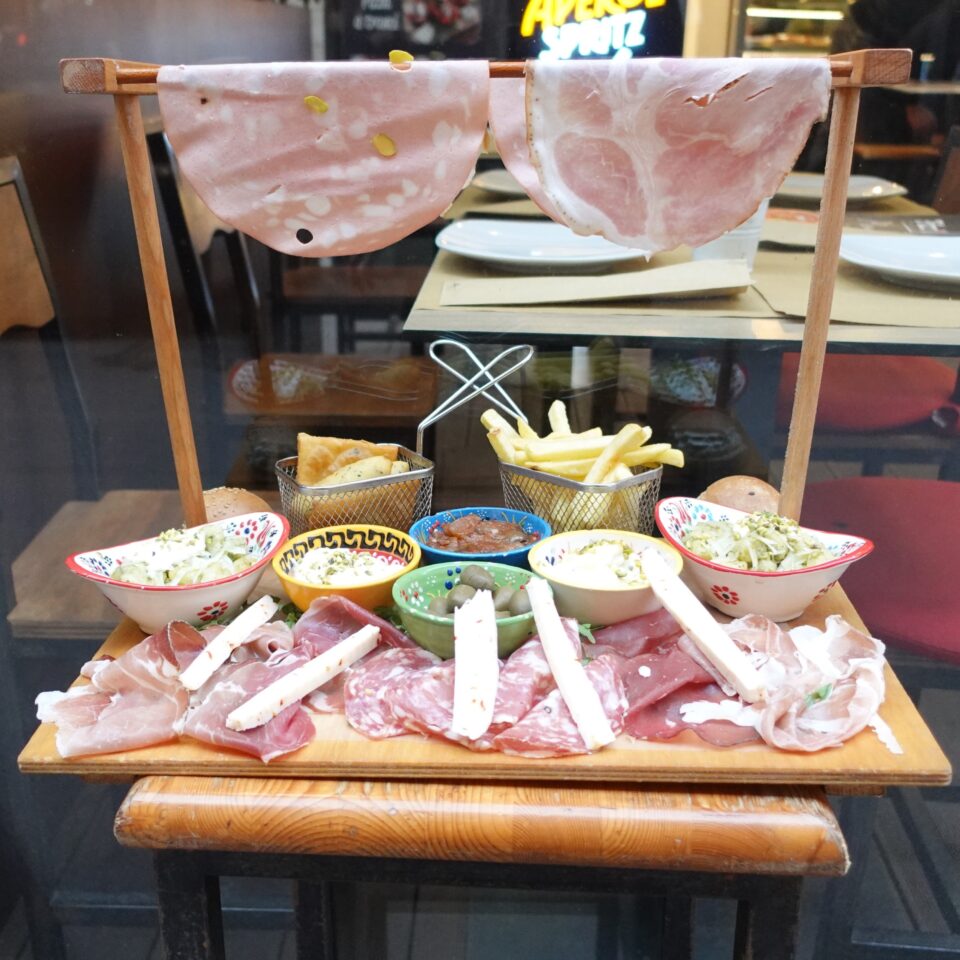
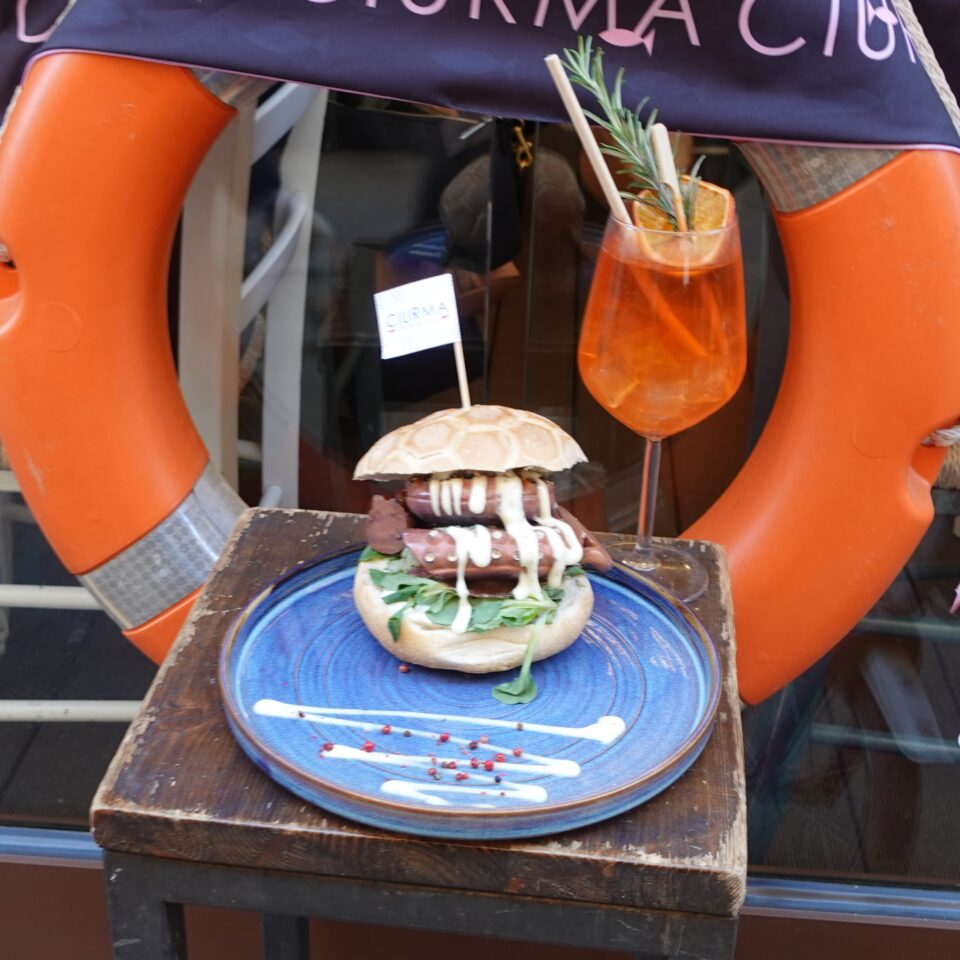
Walking along Via Maqueda, you soon reach its famous intersection with Via Vittorio Emanuele, known as Quattro Canti – the Four Corners. This intersection marks the meeting point of Palermo’s four ancient quarters and is considered the very heart of the city’s historic center.
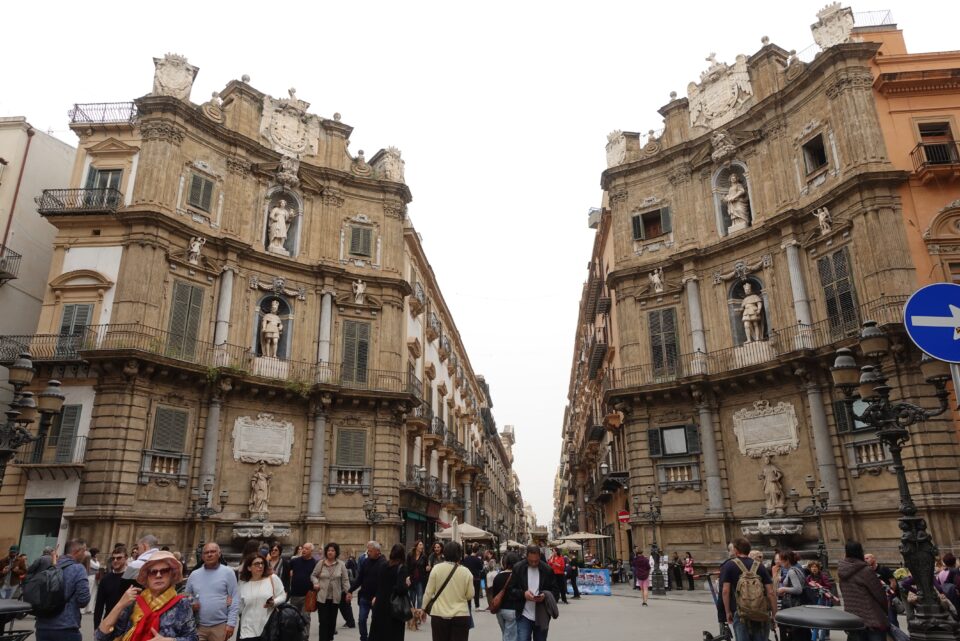
The layout of Quattro Canti is octagonal, formed by four streets and four nearly identical Baroque buildings that complete the shape. Each of these four-story buildings features elaborate decorations: at street level are four fountains, representing the four rivers that once flowed in Palermo, above each fountain is a statue representing one of the four seasons; on the third story, niches contain statues of four Spanish rulers of Sicily, with their respective coats of arms above them; and on the top story, statues of Palermo’s four female patron saints are displayed. Together, these elements highlight the interplay of nature, political power, and religious devotion in the city.
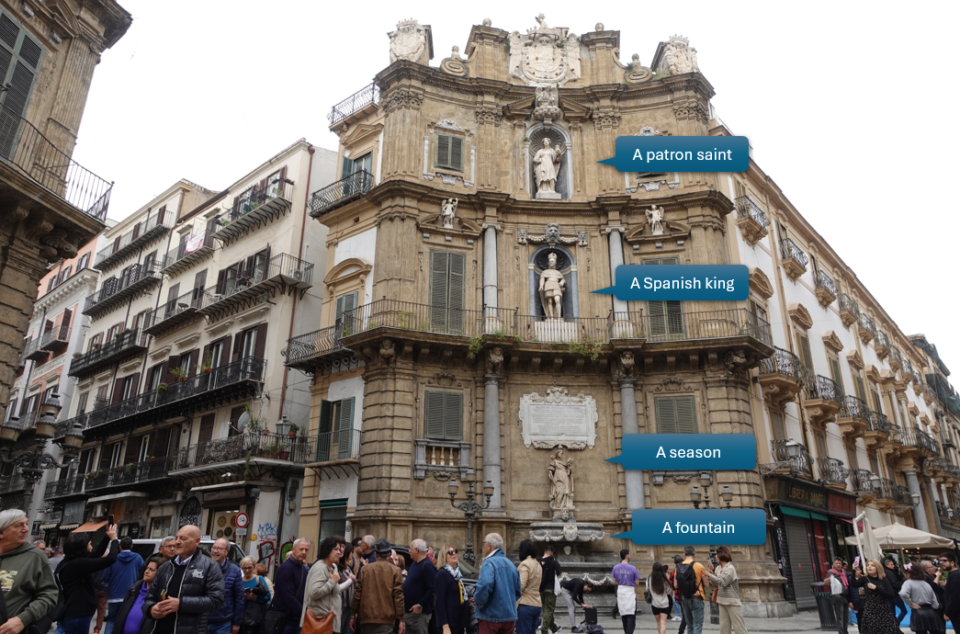
Continuing down Via Maqueda just a few meters, we reached Piazza Pretoria. At the center of this square is the Fontana Pretoria. The fountain was originally designed in 1554 for a villa in Florence. However, in 1574, the Senate of Palermo purchased it, disassembled it into over 600 pieces, and transported it to Sicily, where it was reassembled in front of the city’s town hall.
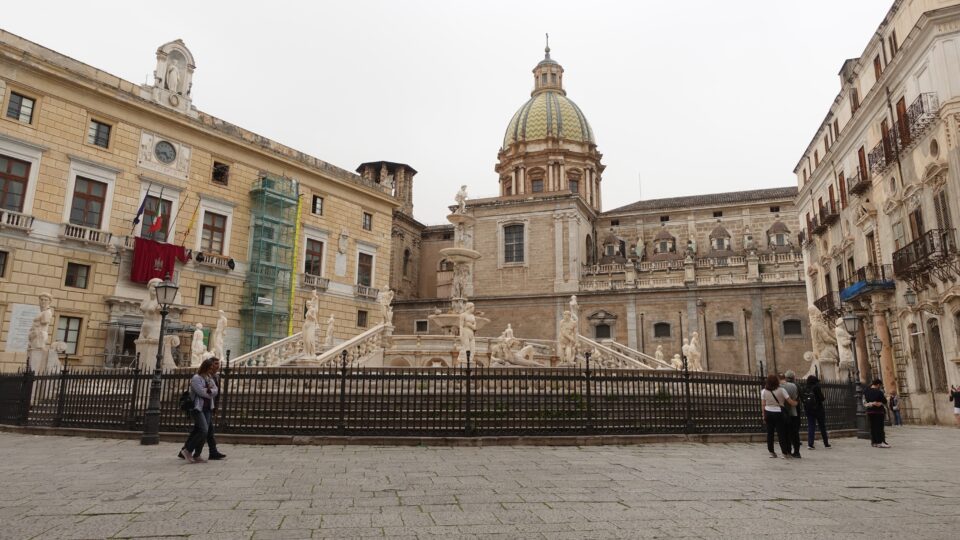
The Fontana Pretoria is a large circular fountain adorned with numerous white marble statues depicting many mythological figures. Locals have long referred to it as “La Fontana della Vergogna” (The Fountain of Shame) due to its many nude statues. According to legend, the nuns from the nearby Santa Caterina Monastery would cover their eyes when passing by!
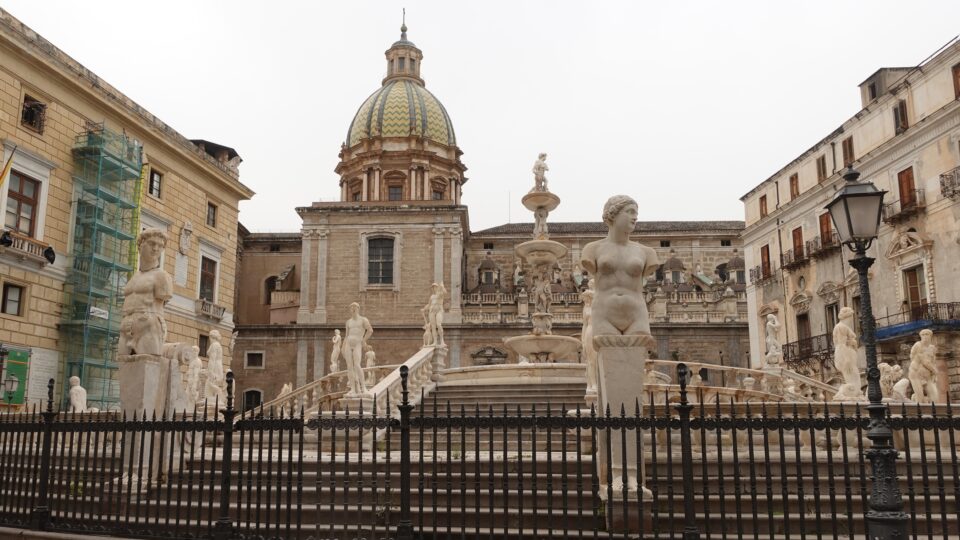
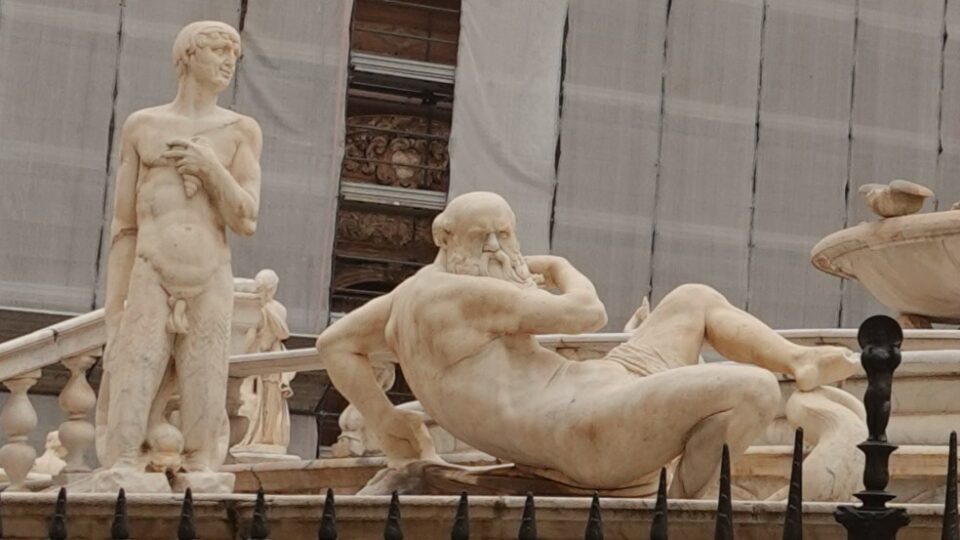
Today, this nearby monastery houses one of Palermo’s hidden gems – a bakery offering traditional Sicilian pastries made from centuries-old convent recipes. This bakery, called Segreti del Chiostro (The Secrets of the Cloister), was once run by cloistered nuns. Since the monastery closed in 2014, it operates as a public bakery, allowing visitors to buy and taste these historic treats.
When we arrived, a long line of people was waiting to enter, but the line moved quickly. After purchasing a pastry, customers take their treats outside to enjoy them in the cloister courtyard, adding to the charm of the experience.
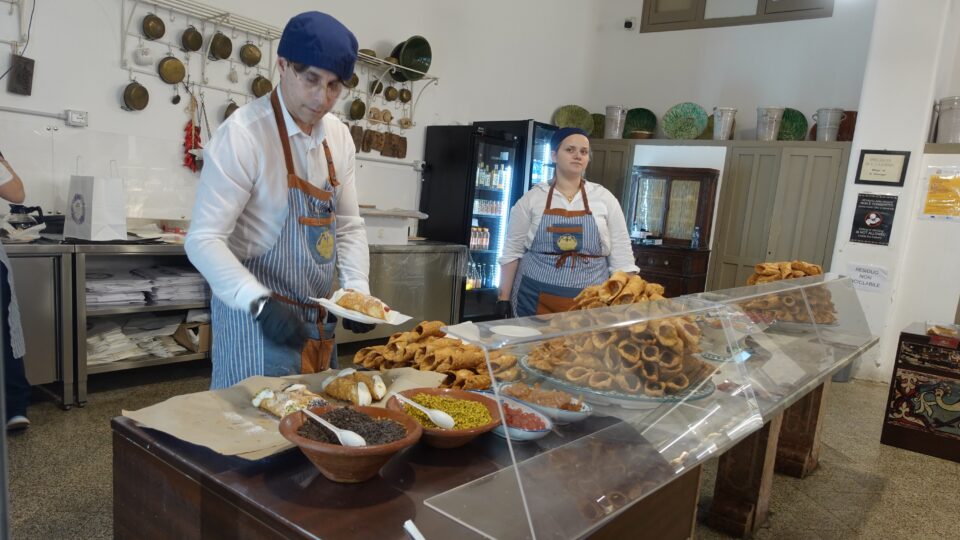

The entrance to the bakery is from the nearby Piazza Bellini, home to two UNESCO World Heritage churches, San Cataldo and the Martorana, which feature Arab-Norman architectural elements.
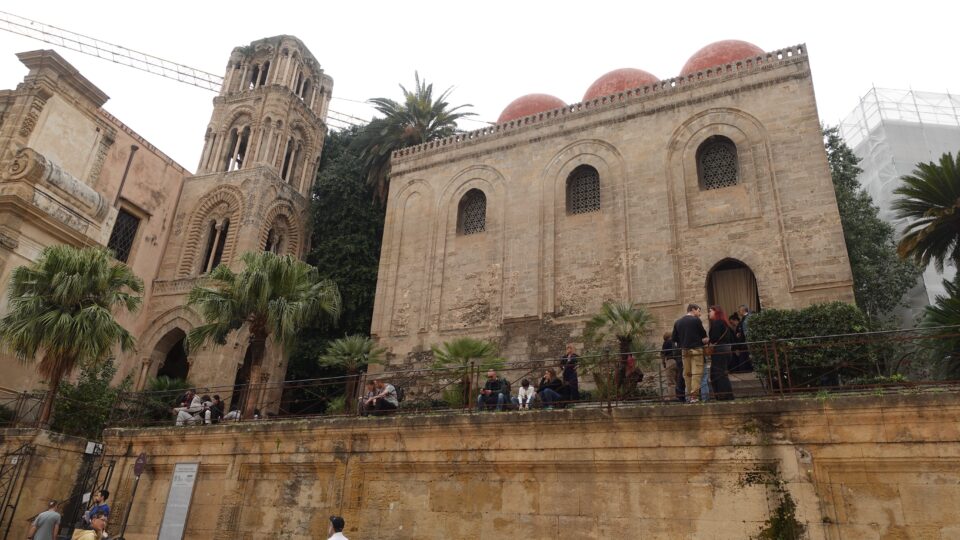
From the Four Corners, a 500-meter walk down Via Vittorio Emanuele leads to the huge and impressive Palermo Cathedral, dedicated to the Assumption of the Virgin Mary. The cathedral is best known for its architectural fusion, blending Norman, Moorish, Gothic, Baroque, and Neoclassical styles – a testament to Sicily’s diverse history.
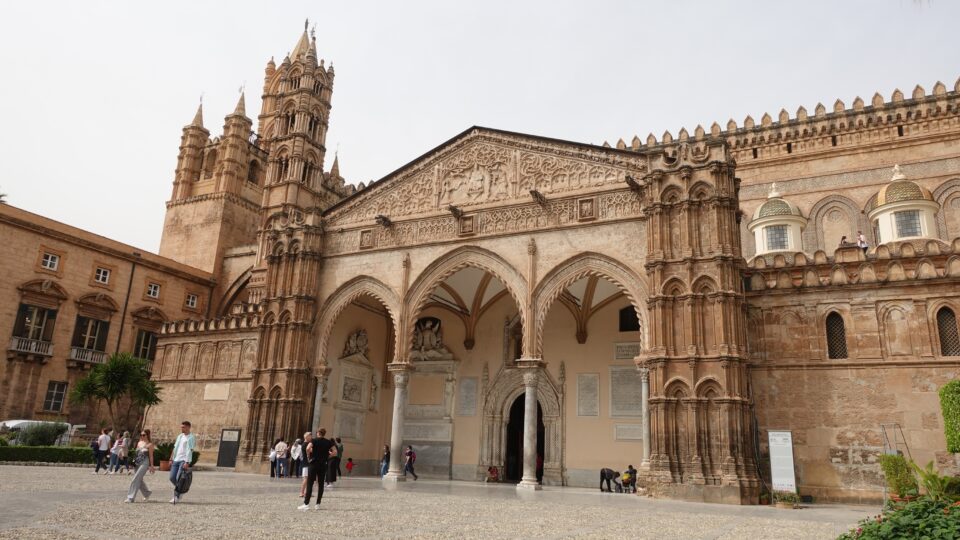
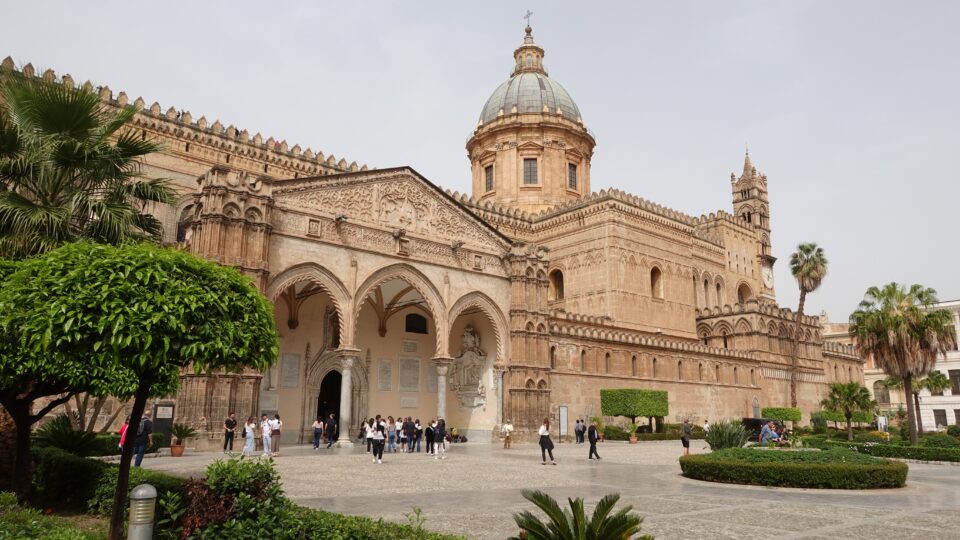
Next to the cathedral stands the Carro Trionfale di Santa Rosalia (Triumphal Chariot of Saint Rosalia), a large, gilded float. Saint Rosalia, the patron saint of Palermo, is credited with saving the city from the plague in 1624. Every year, during the Feast of Saint Rosalia (Festa di Santa Rosalia), held from July 10–15, the float, adorned with flowers, carries the statue of the saint through the streets in a grand procession, culminating at the cathedral.

Continuing down Via Vittorio Emanuele, you pass Villa Bonanno, a large public garden. At the end of the park stands Palazzo dei Normanni (the Norman Palace), also known as the Royal Palace of Palermo. It is the oldest royal residence in Europe and once served as the private residence of the rulers of the Kingdom of Sicily. Since 1946, it has housed the Sicilian Regional Assembly.
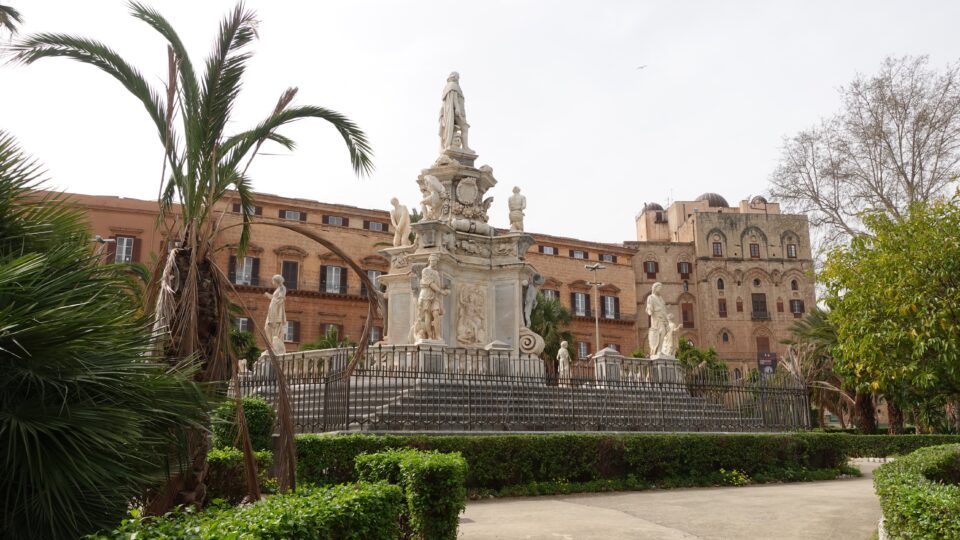
Next to the Norman Palace, and at the end of Via Vittorio Emanuele is Puorta Neuvo, one of the main gates to the historic center of Palermo.
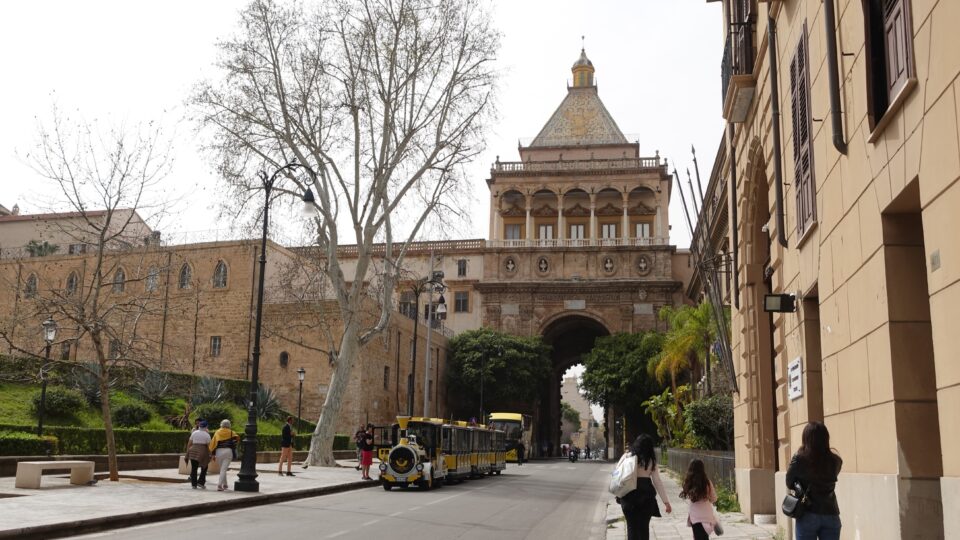
From our apartment, turning down Via Maqueda in the opposite direction (not towards the Four Corners), you reach the Teatro Massimo, one of the largest opera houses in Europe, with a seating capacity of around 1,300. The Teatro Massimo was inaugurated in 1897, and its opening was marked by a performance of Aida by Giuseppe Verdi, the famous Italian composer to whom this opera house is dedicated. The theater was closed for nearly 23 years for restoration, and it was finally reopened in 1997.
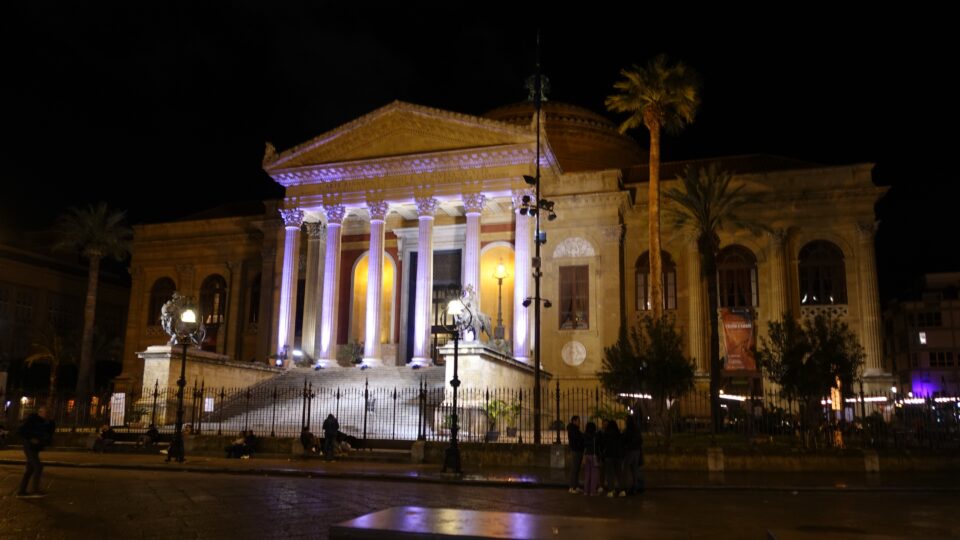
Teatro Massimo is prominently featured in a famous scene from The Godfather Part III (1990), where a violent shootout erupts on the steps of the opera house between the Corleone family and their enemies, culminating in the tragic death of Michael Corleone’s daughter, Mary.
Palermo has several food markets, and we visited one of them – the Mercato di Ballarò. This market is one of the oldest and most famous markets in Palermo. We walked through the market, crowded with people, past many stalls of vegetables, olives, cheeses, spices alongside tourist trinkets. What was most prominent was the ready-made food stalls – especially those selling seafood, including grilled octopus.
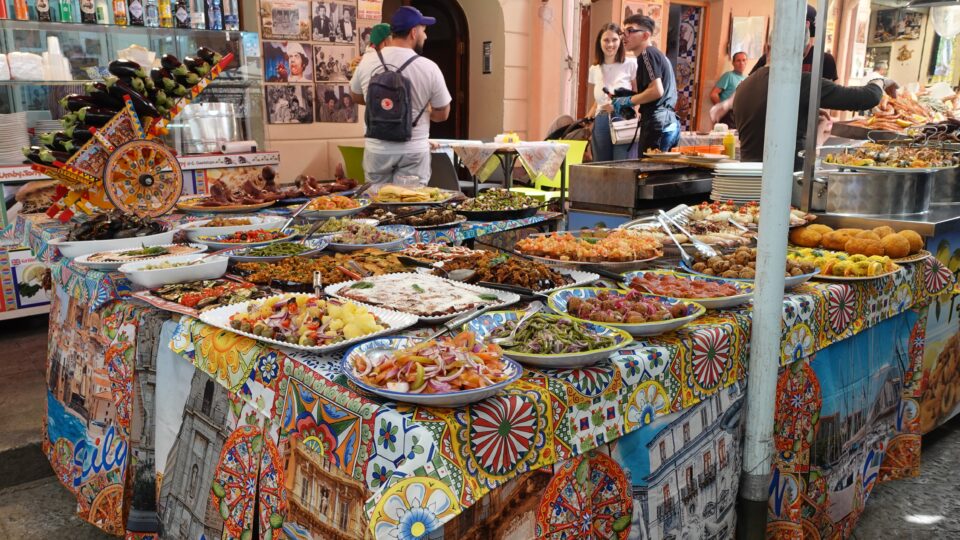
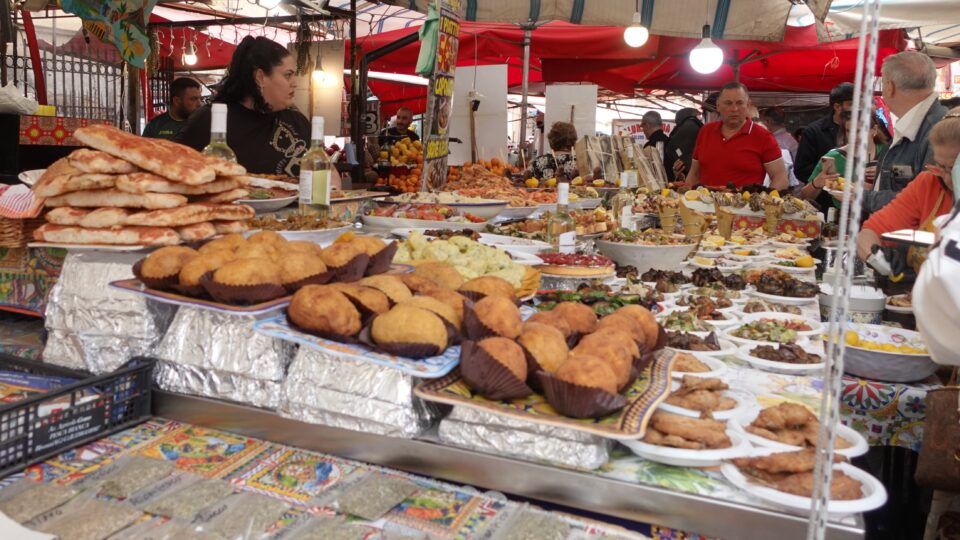
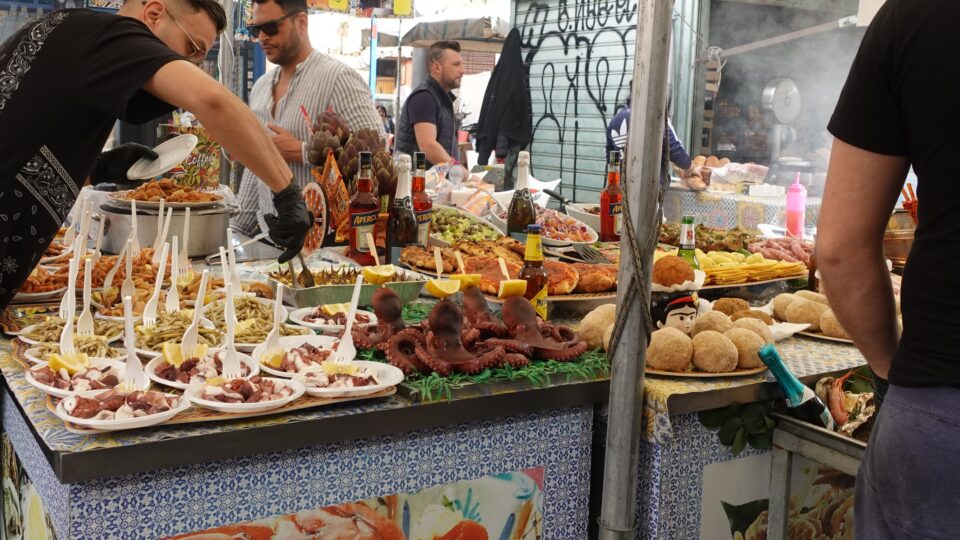
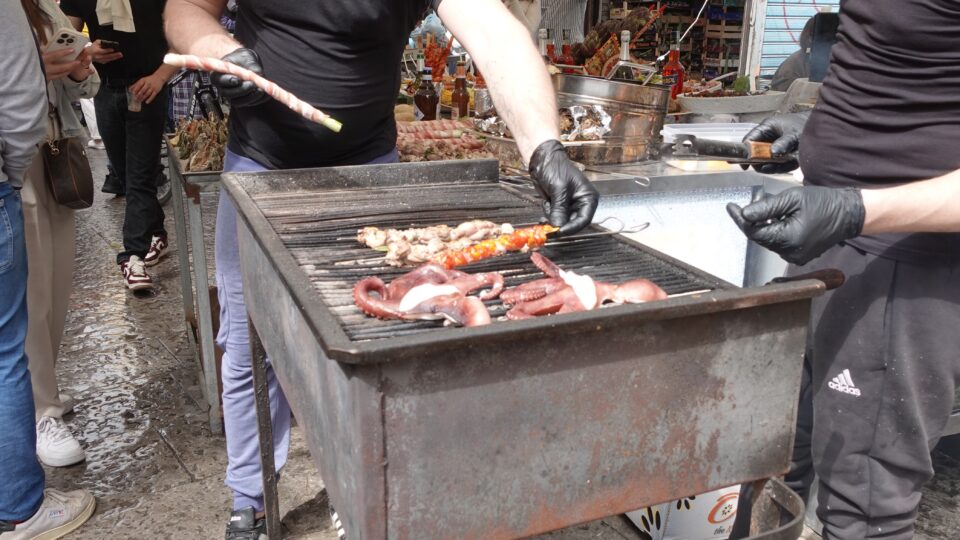
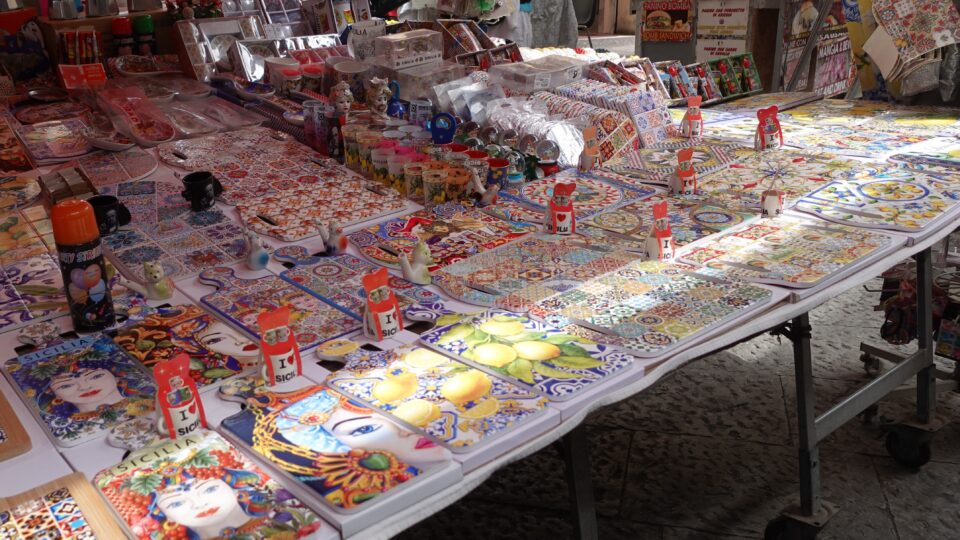
Not being items we would eat, we went instead to aTipico, a vegan restaurant offering a modern twist on traditional Sicilian dishes. We have eaten in vegan restaurants all over the world, and this was one of the best.
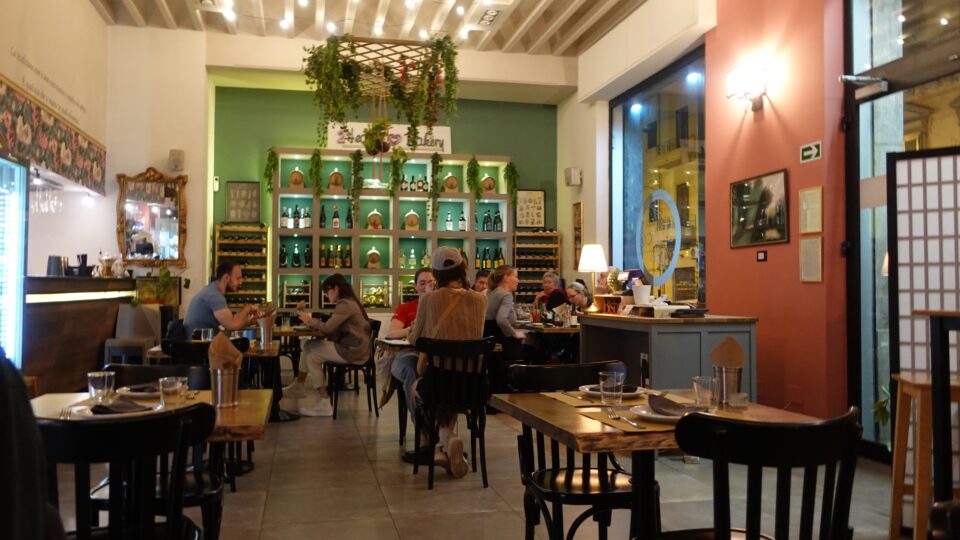
On Sunday, we stumbled upon a large flea market known as Mercato Antico. This market, open only on Sundays, offers a diverse array of stalls featuring everything from handcrafted goods, vintage clothing to antique treasures.
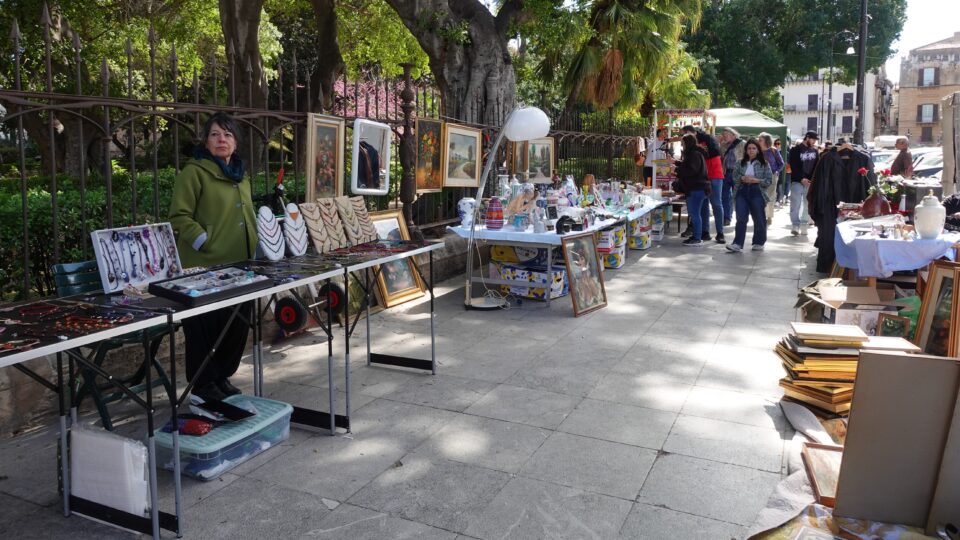
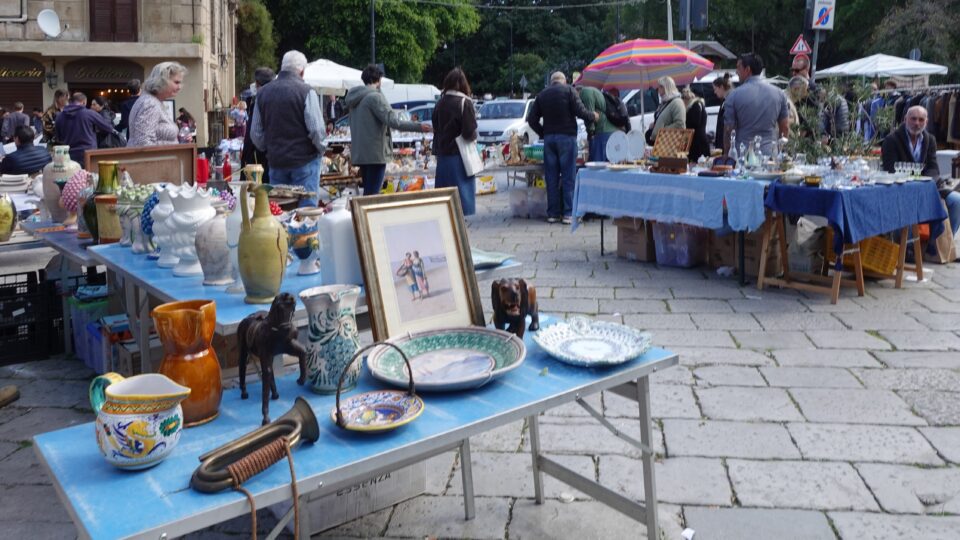
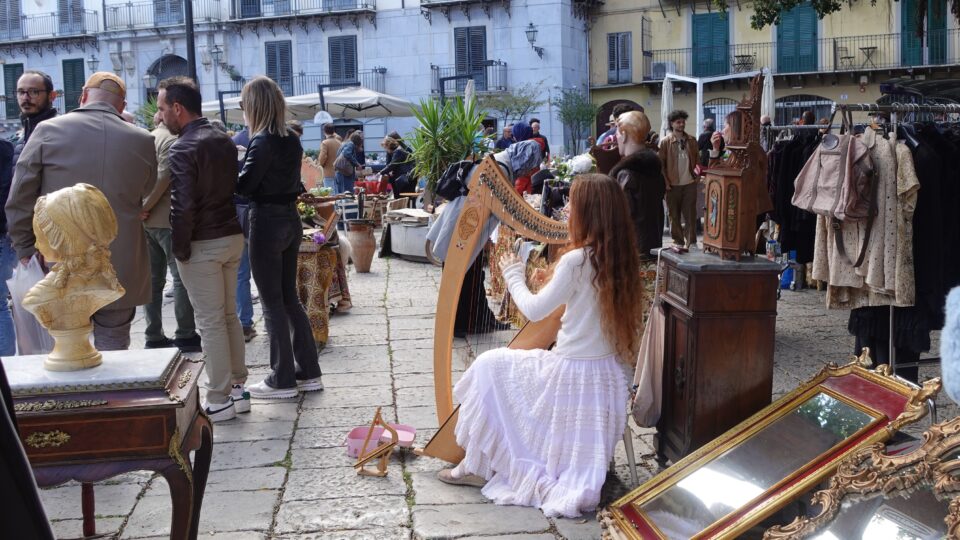
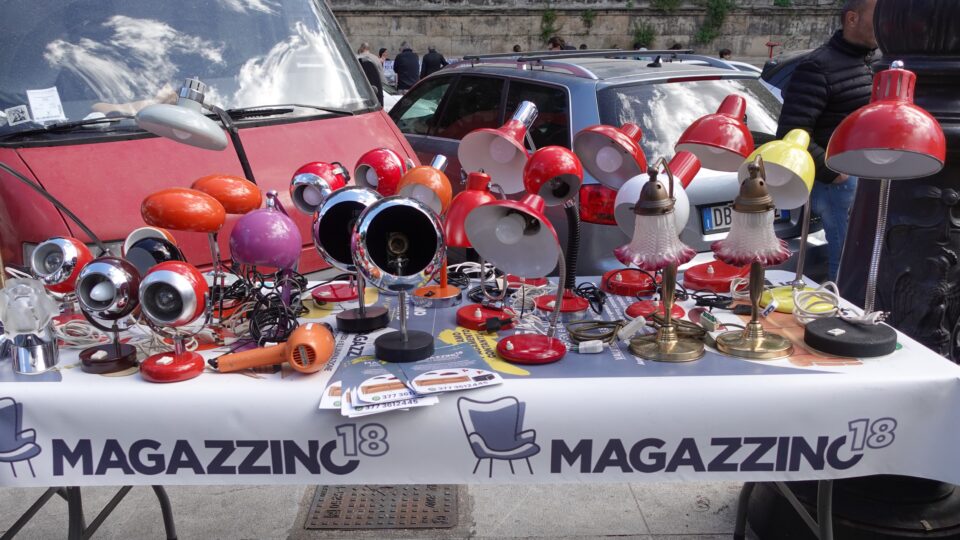
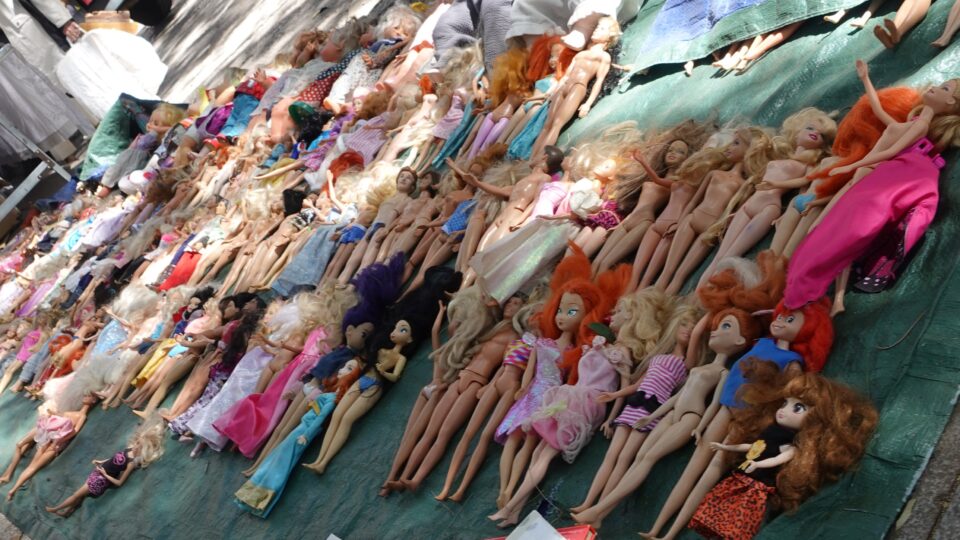
On a less positive note, we walked through some areas of Palermo, off the beaten track, that were not so nice – old, crumbling and dirty with garbage everywhere. Here too we stumbled upon a market, but of a less attractive kind.
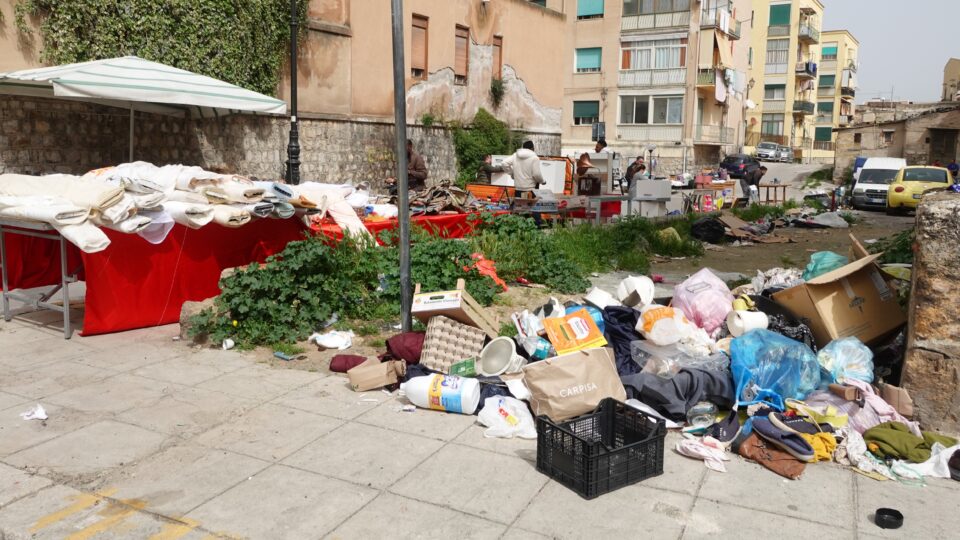

Additionally, Palermo was the first place in Sicily where we encountered anti-Zionism slogans.
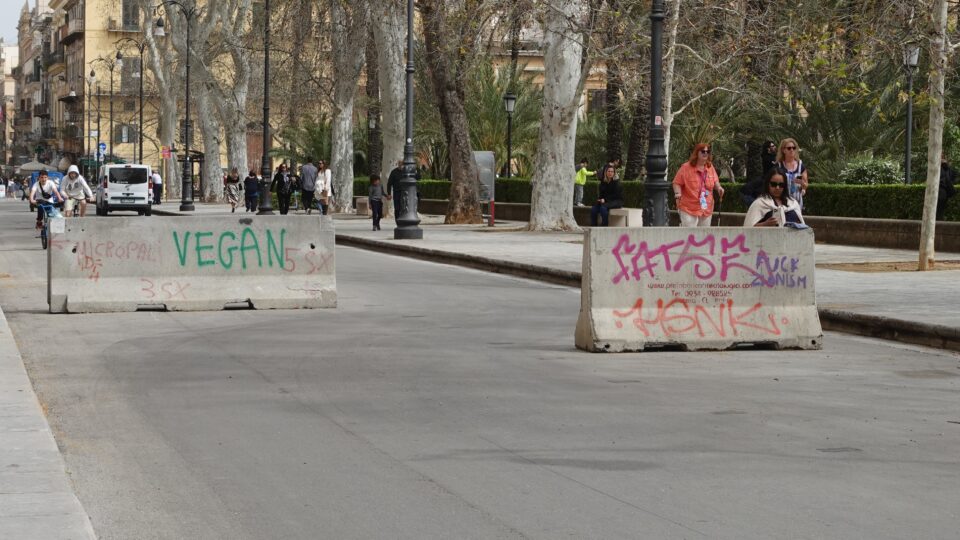
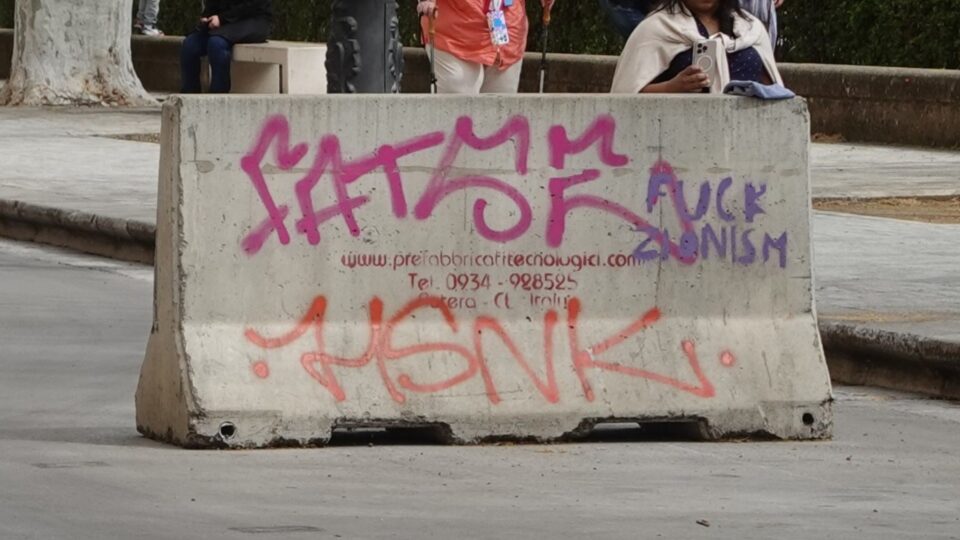
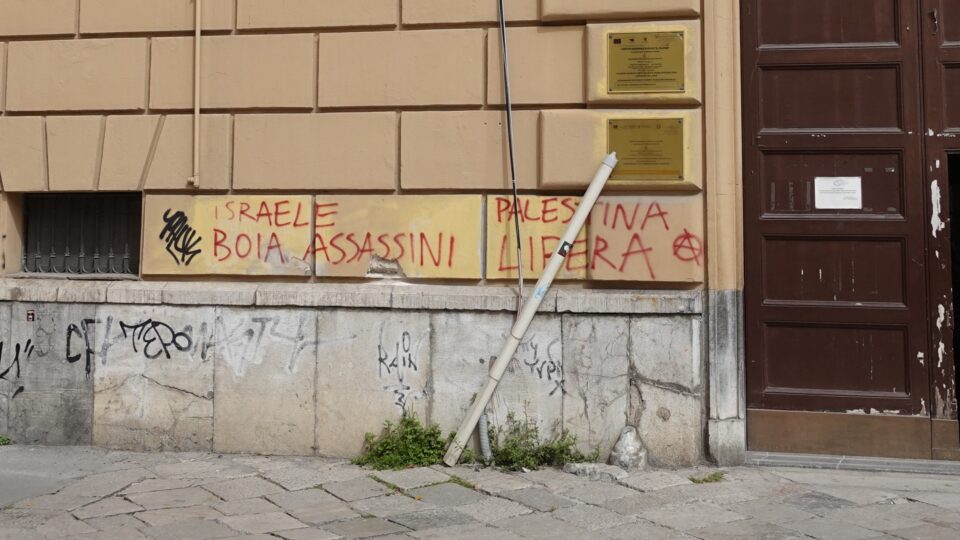
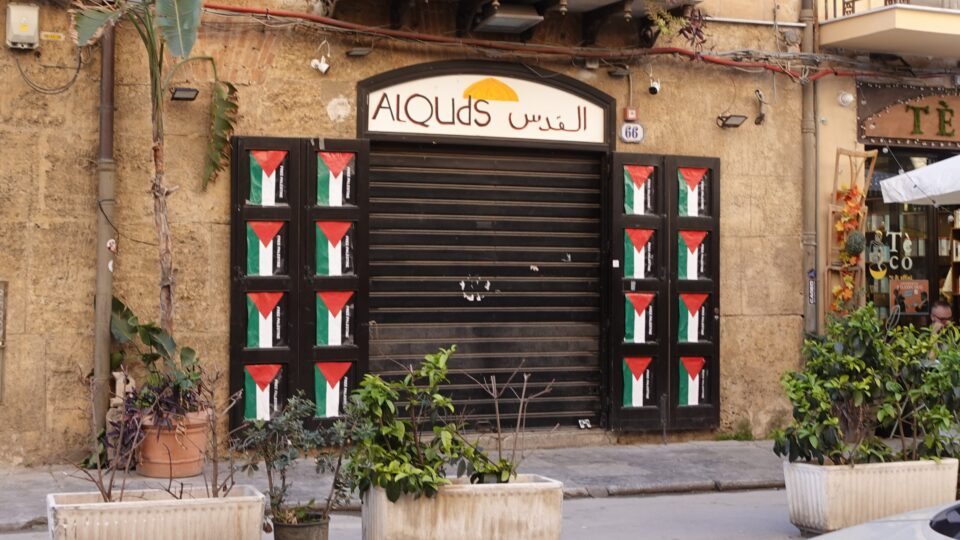
In general, we never really warmed up to Palermo. Although we saw some nice places, it is a city for people who go into churches, eat street food and enjoy nightlife – not us. It could be that to reach the Jewish sites, we went to some off the beaten track places and saw uglier sides of the city most tourists do not visit. Or it could be that our apartment, which inside was modern and beautiful, was on a small lane in the historical center, often full of garbage. It was also the first place in Sicily that we saw antisemitic sentiments. Maybe if we had stayed in a more elegant area, we would have felt different. To summarize our experience, Palermo is very photogenic; the photos make it look much nicer than we found it to be.
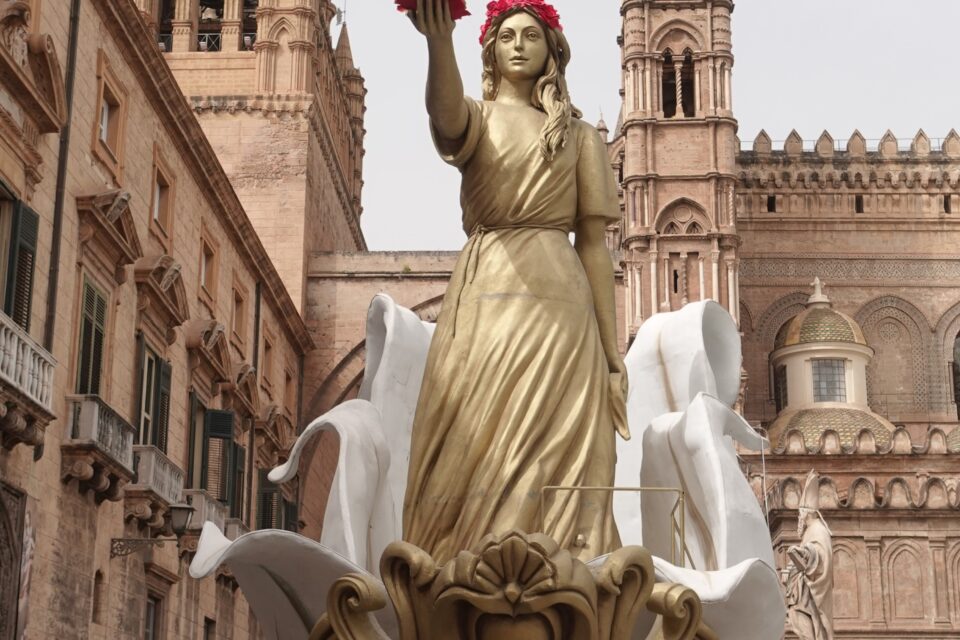
who are the Normans that conquered Sicily?
The Normans are the descendants of Viking invaders in France. They were given the land of Normandy, France, in the early 1010s, by King Charles II, as a protection deal to defend France from more Viking invaders. The Normans assimilated into French society, converting to Christianity and speaking the French language.